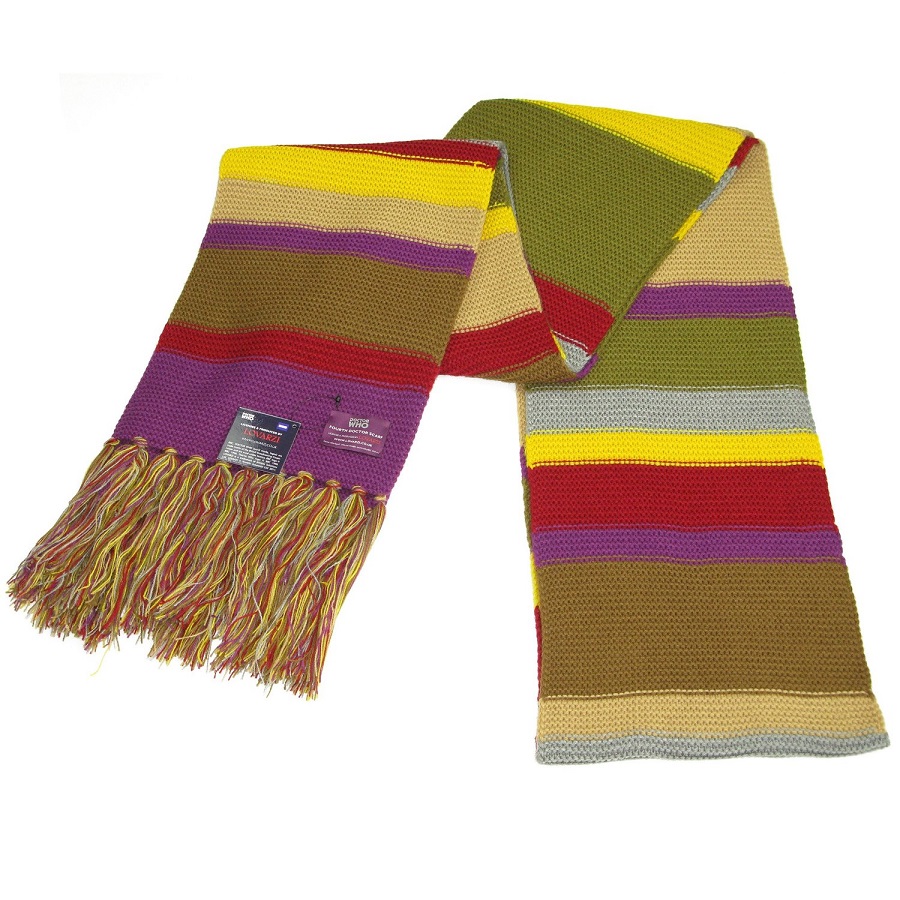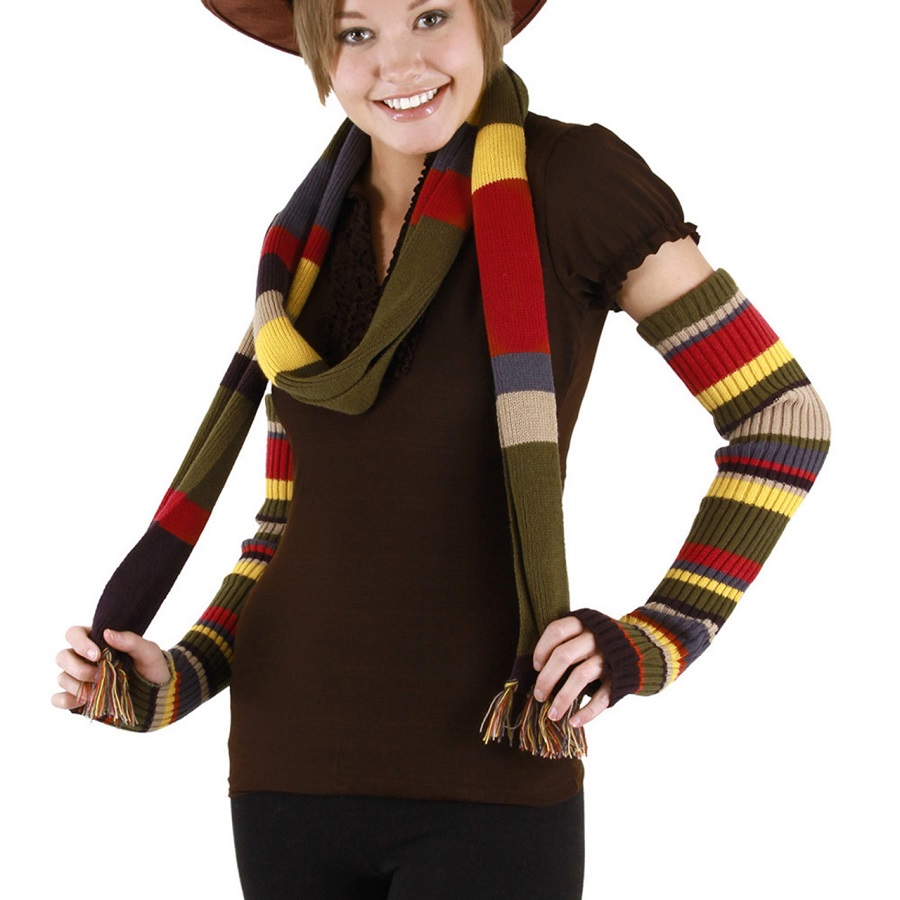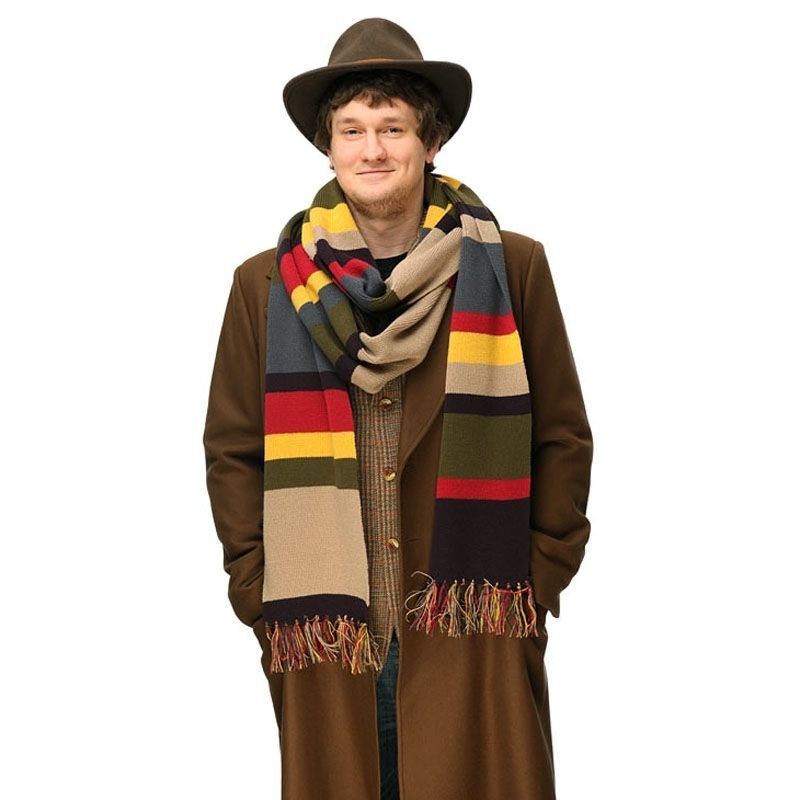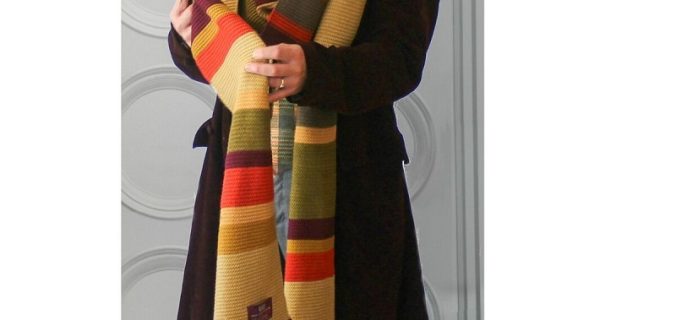History of the Tom Baker Scarf
Tom Baker, the fourth Doctor, gave life to the iconic scarf. The ‘Tom Baker scarf’ became famous in the 70s. Fans loved its colorful, lengthy design. Through the seasons, his scarf evolved in style and colors.
Evolution Through the Seasons
In its TV journey, the scarf saw many changes. Early seasons featured shorter versions. Later, the scarf’s length became remarkable. Patterns shifted subtly, reflecting the story’s progression and the Doctor’s travels.
Critical Changes and Variations
Critical variations in the scarf were noticeable. Widths fluctuated between 9 and 11 inches. Colors and patterns were adjusted. Sometimes, two scarves were even stitched together. These changes sparked the interest of fans and crafters alike, eager to replicate the scarf’s magic.
Choosing the Right Materials
When embarking on the journey to recreate the tom baker scarf, starting with the right materials is crucial. The right yarn and needles will make your knitting experience enjoyable and your scarf authentic.
Yarn Selections
Choosing the right yarn is vital for getting the look and feel of the original tom baker scarf. You’ll want a DK weight yarn, which provides the perfect balance of warmth and thickness. Selecting yarns that mirror the original colors is essential for authenticity. Look for yarn brands that offer a range of hues to match the varied shades seen on screen. As indicated in the Reference Blog1, Stylecraft Special DK comes highly recommended due to its wide color palette and suitable texture.
To ensure consistency, use the same brand of yarn throughout your project. This will help maintain uniformity in color and texture, contributing to a more professional finish.
Selecting the Correct Needles
The needles you choose can greatly affect your knitting tension and ultimately the size of the scarf. For the tom baker scarf, 3.5mm to 4mm needles are ideal. These sizes help achieve a tight garter stitch which is sturdy and close to the original design. Beginners may find larger needles, like 4mm, easier to handle while more experienced knitters might prefer the 3.5mm for a tighter weave.
Remember to slip the last stitch of each row to create a smooth edge, just as Reference Blog1 suggests. This will give your scarf a neat, finished look. And don’t forget, while the knitting process is straightforward, the choice of quality materials can make all the difference in your final product.
Scarf Knitting Basics
Knitting the Tom Baker scarf starts with understanding the foundation: the Garter Stitch. This simple stitch is the core of the scarf’s design and ensures a flat, flexible fabric fit for time travel—or just keeping warm in style.
Understanding Garter Stitch
The Garter Stitch is a beginner-friendly stitch that requires you to knit every row. For the Tom Baker scarf, every stitch counts. You’ll create a texture that’s ridged and stretchy. It’s perfect for a scarf that can handle some wear and tear. Each row adds to the thickness and warmth, making it ideal for the seasons the Doctor traversed on TV.
To begin, cast on the number of stitches recommended for the scarf’s width. Then, simply knit each row until the scarf reaches your desired length. Slip the last stitch of every row to get a neat edge, echoing the craftsmanship seen in the original Tom Baker scarf.
Essential Tips for Beginners
As a novice, here are some tips to help you craft a stellar Tom Baker scarf:
- Choose needles that feel comfortable in your hands; 4mm are great for starters.
- Keep your knitting tension even. It makes for consistent looking stitches.
- Count your stitches regularly to ensure none are dropped.
- Don’t rush. Take your time and enjoy the knitting journey.
- Keep the pattern and length of the scarf in mind as you work. It will keep you on track.
Remember, creating a Tom Baker scarf is not just about knitting; it’s about recreating a piece of television history. With each stitch, you’re bringing an iconic accessory to life, much like the vibrant character of the Doctor himself.
 Detailed Knitting Instructions
Detailed Knitting Instructions
After selecting the right materials, you’re ready to tackle the detailed knitting instructions for the iconic tom baker scarf. The process merges simplicity with careful attention to details.
Setting Up Your Scarf
To start your scarf, create a foundation row. Cast on the required number of stitches for the desired width. Reference Blog1 suggests around 60 stitches for a standard width. Begin each row with a knit stitch and end by slipping the last stitch. This technique produces smooth edges. Measure the length frequently to match the original scarf’s dimensions, which could reach up to 18 feet.
Keep a consistent rhythm as you knit. Even tension ensures an even texture throughout. A row counter or stitch marker can help track progress. Remember to use the garter stitch method—knitting every row for a ridged, stretchy fabric.
Pattern Replication Tips
Replicating the scarf’s pattern can be challenging. Pay close attention to the color sequence and stripe patterns. The Reference Blog1 provides a chart which can be immensely helpful. Use the chart as a guide to lay out the color pattern before you begin.
Make notes of any alterations or unique features from your research. Tom Baker’s scarf featured varying widths and irregularities, which you may choose to incorporate. Count stitches and rows carefully to create accurate repetitions.
Lastly, examine pictures or screenshots from the show for visual references. It’s a great way to ensure you’re on the right track towards an authentic tom baker scarf recreation.
Creating Accurate Colour Matches
Making an authentic tom baker scarf means getting the colours just right. Fans of the Doctor Who series recognize the scarf’s distinct hues. The colours not only define its look but also its connection to Tom Baker’s portrayal of The Doctor.
Challenges and Solutions
Crafters face hurdles in finding exact yarn colours. Photos and screens vary, presenting different shades. Yarn brands discontinue colours, adding to the struggle. Yet, there are ways to overcome these challenges. Compare as many images as possible for a common colour thread. Use a colour chart from knitting communities online. Some fans have matched the colours and shared their findings. If exact shades are unattainable, pick colours close to the originals. Blend similar hues to create the desired effect. Knitters could even dye yarns to achieve the perfect match.
Recommended Yarn Brands
For a Tom Baker scarf, the yarn’s quality and colours matter. Stylecraft’s Special DK yarn gets many recommendations. It comes in varied shades ideal for the scarf. The Reference Blog1 used it for both replicas made. They offer a good range that closely mirrors the original colours worn by Tom Baker. When choosing yarn, prioritize colour accuracy and feel. The scarf should look and feel reminiscent of the classic Dr. Who accessory. Keep these tips in mind, and you’ll craft a scarf that dazzles fans like the original.
Adding the Final Touches
Once your knitting reaches the proper length, it’s time for the final touches on your tom baker scarf. These details can distinguish between a good scarf and a truly iconic one.
Incorporating Tassels
Add tassels to your tom baker scarf to mirror its TV counterpart. Cut strands of yarn in all seven colors, about four inches long, as Reference Blog1 specifies. Group them together, then attach them to either end of the scarf. Space them closely for a full, vibrant look. These tassels bring a playful movement to the scarf and complete its authentic feel.
Ensuring Symmetry and Alignment
Check the entire length for symmetry. Align the pattern and colors for consistency. Fix any twists so that the right side of the scarf always faces out. Following Reference Blog1’s mention, the original had sections where ‘wrong’ and ‘right’ sides switched. Decide if you want to replicate this quirk. The attention to detail in alignment will show in the finished scarf. Now, your tom baker scarf is ready to wear, gift, or display as a tribute to the beloved Doctor.
